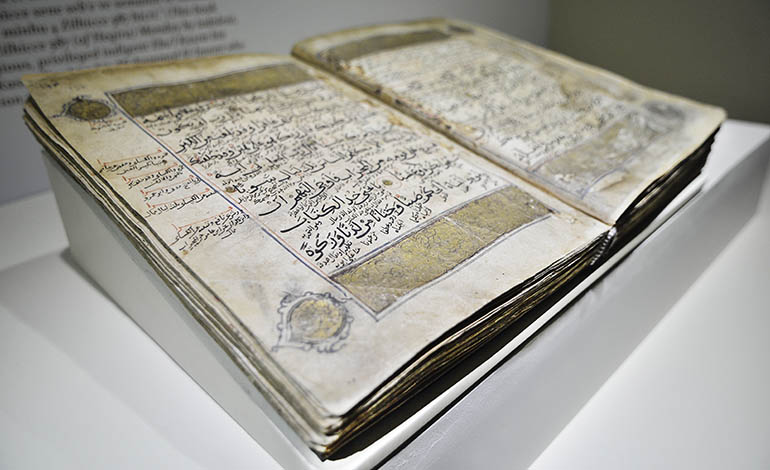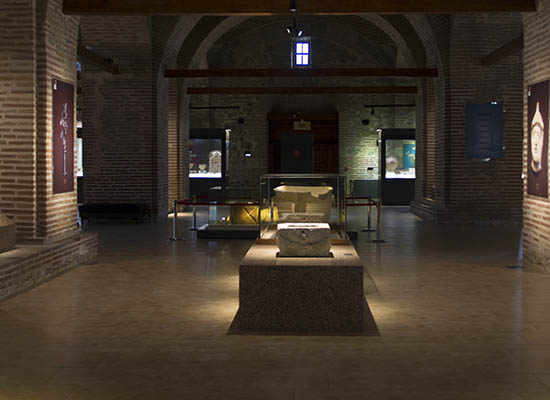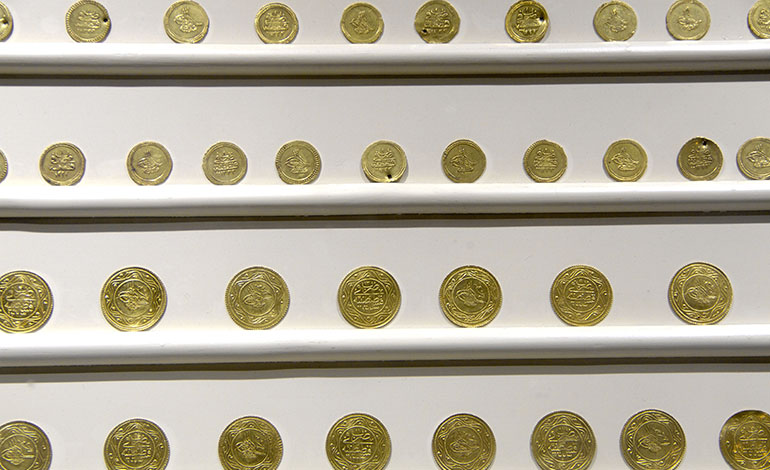The Tokat Museum, one of the earliest museums of the Republican Period, began its activities in 1926 in the Gökmedrese building, a medical madrasah belonging to the Anatolian Seljuk Period. As the number of artefacts increased over the years, the storage facilities became insufficient. In order to protect the artefacts accumulated in the warehouses in healthier conditions, to exhibit the new artefacts within the framework of modern museology and to facilitate the restoration of the existing building, Tokat Museum relocated to the Ottoman period building Arastalı Bedesten in the city centre in 2012. The term 'Bedesten' is used to describe all covered bazaars for the sale of precious fabrics, jewellery and similar items. The Arastalı Bedesten was an important economic institution during the period of its construction, and also served the function of today's banks and stock exchanges. It is estimated that the Arastalı Bedesten was constructed in the 15th-16th centuries, based on the surviving ruins and historical sources. The facade of the bedesten is made of ashlar stonework. It has a rectangular plan that is close to square in the north-south direction, and has a round arched door with a rectangular protrusion to the north and south. The interior is divided into sections, each comprising three rows of three pillars. These are covered with nine round domes. There are two arastas with elongated rectangular plans on either side of the bedesten which forms the shops. The Tokat Museum exhibits archaeological artefacts in the part of the building called bedesten. The exhibition commences with the Turhal Ulutepe finds, which were excavated by the Tokat Museum Directorate in 1976. These findings have been instrumental in establishing the chronology of Tokat history, which is now understood to date back to the Late Chalcolithic Period (4000-3000 BC). The exhibition then proceeds to present the findings from Maşathöyük, where the remains of a Hittite period palace have been discovered. The bronze sculpture group from the Roman Period found in the Ağılcık Village of Zile District represents a unique artefact. The display includes jewellery and ornaments from the Roman Period, urns indicating the burial customs, terracotta jugs, terracotta sconces thought to belong to a temple, oil lamps, glass artefacts, and crosses and seals from the Eastern Roman Period. In the same hall, a coin exhibition beginning with the Classical Period displays coins from the ancient cities of Zela (Zile), Komana Pontika (Tokat), Cabeira (Niksar), Sebastopolis (Sulusaray), Neocaiser (Niksar), and Zela (Zile) dating to the Hellenistic, the Roman, the Byzantine and Islamic periods. The Ethnography Hall is located on the west façade of the building, in the arasta section. The collection includes works of copperworking, writing, and weaving, as well as textiles, carpets, rugs, clothing, men's and women's jewellery, lighting tools, door knockers, weapons, gunpowder holders, bath and kitchen utensils, cult items from the Ottoman Period, manuscript books, writing sets, artefacts from the Christian Period, and the oldest known Koran from the Danişmentliler Period, one of the first Turkish Principalities of Anatolia. On the right side of the front garden, located at the entrance of the museum, stone artefacts from the Roman Period are exhibited. On the left side, tombstones from the Eastern Roman and Islamic Periods are exhibited.
TOKAT MUSUEM




